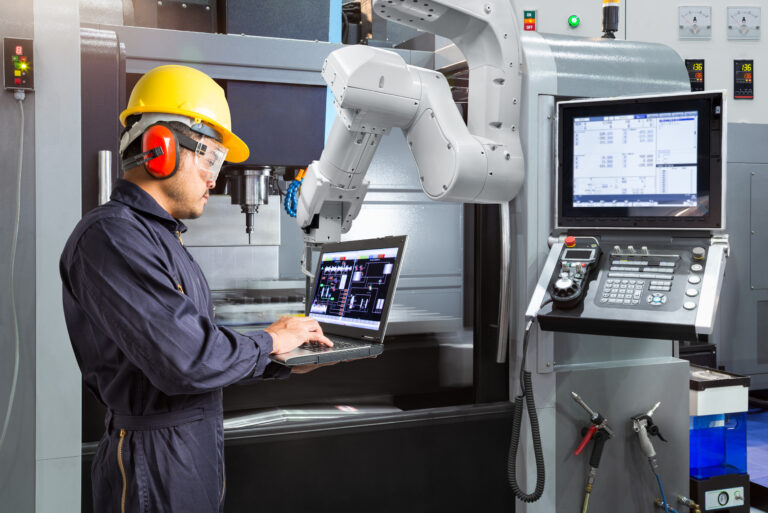This year’s International Manufacturing Technology Show, September 10-15 in Chicago, was the largest yet, with 2,563 exhibiting companies and 129,415 people registered. We enjoyed this fun opportunity to talk with exhibitors, watch demonstrations, and learn about trends to watch in manufacturing and automation.
In case you missed the show, here are our top observations on three trending technologies:
1. Additive Manufacturing
Also called 3D printing, additive manufacturing had a significantly larger presence this year than at the last show in 2016. The show dedicated a larger section to additive manufacturing, and there were more vendor booths showcasing products and innovative ways to use 3D printing. This makes sense considering that the global additive manufacturing market is expected to exceed more than $6 billion by 2022.
It’s clear from demonstrations and talking with vendors that additive manufacturing is not just something to marvel at for the future. A range of applications are pushing the technology to evolve to meet the demands of industry including medical devices like hearing aids and orthopedic implants, the ability to manufacture spare machine parts on the fly, and even new ways to build heavy equipment.

2. 3D Vision and Bin Picking
The challenge with robotic bin picking has long been getting the robot to find a specific item among a random assortment of objects, especially when those objects shift positions each time something is removed. Vendors at this year’s show demonstrated improvements in vision guided robotics (VGR) and 3D vision technology, making them more confident in the effectiveness of robotic bin picking. Prices appear to be coming down as well, which puts this time- and labor-saving technology within reach.
The latest developments mean that real-time decision making is happening as robots don’t just detect an item, but recognize it as the correct one. It’s possible thanks to high-speed cameras continuously capturing and processing 3D images to pinpoint an item’s location, increased collision-avoidance technology to limit hitting the sides of the container, and software that’s easier to program and use.
3. Collaboration Mindset
The show featured a large variety of collaborative robots, or cobots, including some new suppliers. As with additive manufacturing, the market for cobots is growing rapidly (by 2020 industry analysts believe the cobot market could surge to $3 billion, with 150,000 units in use), and we saw many examples of new and expanding applications. We also noticed a number of peripheral component vendors displaying end-of-arm-tools (EOAT), safety scanners, automated guided vehicles (AGVs), vision components and more.
Many vendors selling machine tools and grinding/polishing machines now offer optional machine-tending robots with their equipment. Cobots excel at this type of work, which is generally dull or dangerous for humans. They’re seen in conjunction with loading and unloading grinding, milling, turning, injection molding, stamping, punching, trimming, forging and welding equipment, saving time and materials, and freeing workers for higher-level tasks.
Compared to past shows, the mindset surrounding cobots has shifted. Companies aren’t waiting for mature technology to test out new applications, they’re pushing ahead and testing the limits of current technology. For example, a safety concern with collaborative robots is avoiding EOATs with sharp edges or areas that can hurt operators. Three-dimensional printing of these tools makes it easier to design round, organic, or softer shapes that are inherently safer. It’s also a good way to make lighter tools, which add to the robot’s efficiency.
“Companies aren’t waiting for mature technology to test out new applications, they’re pushing ahead and testing the limits of current technology.” Tweet this.
As always, IMTS gave us valuable insight to the state of automation in manufacturing. New capabilities in additive manufacturing, 3D vision and collaborative robots were stand-outs, and you can be sure we’re keeping a watchful eye for even more developments. We were also excited to see many vendors and customers embracing these technologies as they continue to evolve. The future of manufacturing has arrived, and Force Design is excited to be a part of it.




